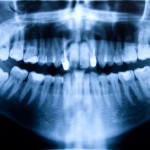
Postoperative pain, swelling and trismus are common postoperative problems following the removal of impacted third molars. Hyaluronic acid (HA) is a major carbohydrate component of the extracellular matrix and can be found in many tissues and has been introduced as a bio-material with potential to enhance wound healing. It has been used in ophthalmology, dermatology, and rheumatology.The aim of this study was to compare the efficacy of HA and Benzydamine hydrochloride (BnzHCl) sprays in reducing swelling, pain, and trismus after the surgical extraction of impacted mandibular third molars.
Patients with bilateral symmetrically impacted mandibular third molars were eligible. Patients were excluded if they had signs of pericoronitis and/or pain before surgery, were pregnant or nursing a baby, the extraction of the third molar lasted for more than 30 min or the operation time differed by more than 5 min between the two sides, had antibiotic or other medication therapies during the preceding 2 weeks, had active caries and/or periodontal diseases, had contraindications to the drugs or anaesthetics used in the surgical protocol. The same experienced surgeon using a standard protocol conducted all extractions. Surgical difficulty was rated before the extractions by a single investigator, who performed the preoperative patient selection. All patients received prophylactic antimicrobial and non-steroidal anti-inflammatory/analgesic drugs, and postoperative instructions. The postoperative medication for both groups was 1 g amoxicillin two times a day and 550 mg naproxen sodium every 8h for 4days.Patients were randomised to HA or BnzHCl post-op instructed to apply the spray, two pumps to the extraction area three times a day, for 7 days. Facial swelling was measured and pain intensity was assessed on the day of operation and 2 and 7 days postop using a 10-point visual analogue scale (VAS).
- 40 patients were enrolled
- 34 patients (15 male, 19 female; mean age 23.35 ±3.89 years) completed the study.
- 2 did not return for 2nd surgery; 3 had more than 5 mins difference in operative times between the sides; 1 did not complete questionnaire.
- There was no significant difference in the impaction difficulty score between the sides
- There were no differences between the pain scores between the groups at any time
- Significant differences were seen for swelling and mouth opening on the 2nd postoperative day.
| HA | BnzHCl | ||
| Swelling (mean ± SD in mm) | Operative day | 11.25 ± 0.51 | 11.44 ± 0.65 |
| Day 2 | 12.81 ± 0.83 | 13.36 ±0.56* | |
| Day 7 | 11.54 ± 0.65 | 11.70 ±0.74 | |
| Pain (VAS Score mean ± SD) | Operative day | 7.08 ± 1.46 | 7.14 ±1.23 |
| Day 2 | 3.52 ± 1.54 | 3.64±1.04 | |
| Day 7 | 1.32 ± 0.68 | 1.47±0.61 | |
| Maximal Mouth opening (mean ± SD in mm) | Operative day | 31.14 ± 3.93 | 31.26 ±3.94 |
| Day 2 | 26.32 ±4.23 | 24.08 ± 3.93* | |
| Day 7 | 30.94 ± 3.75 | 30.85 ± 4.03 | |
*statistically significant.
- None of the patients displayed alveolar osteitis, postoperative infection, or an allergic reaction to any of the drugs
The authors concluded
Although no evidence of a reduction in pain levels was detected, hyaluronic acid appears to offer a beneficial effect in the management of swelling and trismus during the immediate postoperative period following impacted third molar surgery.
Comments
While statistically significant changes are demonstrated after two days for both swelling and mouth opening for HA, the actually differences between the two groups are small and may not be clinically important. This would appear to be the first randomised controlled trial of this product for this application and is small and no power calculation has been carried out. While the post-operative medication regime is clearly indicated the non-steroidal anti-inflammatory/analgesic drugs given pre-op and not. In order to properly assess if this agent is effect more larger and well conducted trials are necessary. Corticosteroids are widely used to reduce pain, swelling and trismus following third molar surgery ( Dental Elf 3rd Sept 2012 and 5th March 2013) baut can cause adrenal suppression, delayed wound healing, and increased susceptibility to infection so should HA be found to be effective with fewer adverse effects this would have wider clinical use.
Links
Koray M, Ofluoglu D, Onal EA, Ozgul M, Ersev H, Yaltirik M, Tanyeri H. Efficacy of hyaluronic acid spray on swelling, pain, and trismus after surgical extraction of impacted mandibular third molars. Int J Oral Maxillofac Surg. 2014 Jun 9. pii: S0901-5027(14)00179-9. doi: 10.1016/j.ijom.2014.05.003. [Epub ahead of print] PubMed PMID: 24924267.
